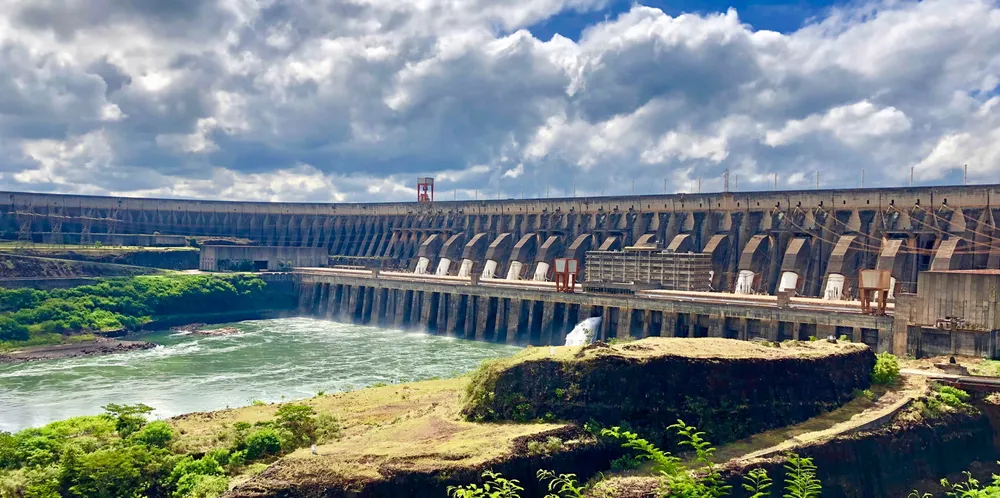Turbine giants struggle in Brazil as hydropower turns the screw on wind
ANALYSIS | Nation installed 4.8GW of onshore wind last year but this is set to drop by half in 2024

Brazil may have installed a record amount of onshore wind capacity last year, but its domestic turbine manufacturing sector is suffering from a downturn that threatens to turn into a full-blown crisis.
German manufacturer Nordex became the latest wind turbine manufacturer to pull back from the world's third biggest market for onshore wind earlier this month when it announced that it was scaling down production in the country in response to low demand.
Nordex indicated, through a spokesperson, that it is adjusting to two years of unusually high capacity in a Brazilian hydroelectric system that regularly supplies more than 60% of the country's electricity.
The spokesperson described a knock-on effect “causing the price of short- and medium-term energy to be severely reduced, making the signing of new long-term power purchase agreement (PPAs) for the acquisition of new energy by local industries with our customers unfeasible and thus postponing our customers' decision to invest in new wind farms, which would generate the purchase of new wind turbines”.
The unusual intensity of the hydrological cycles may have been the most pressing factor behind the price doldrums, but it is not the only one; high interest rates, climbing capital costs and regulatory issues are also among the complaints.
"Hurdles for infrastructure remain high in Brazil and there are regulatory challenges, such as the low availability of connection to transmission lines in the Brazilian Northeast, where the best projects are located,” the Nordex spokesperson added.
The retrenchment trend arguably started in 2022 when GE Renewable Energy – as it then was – suspended new turbine production in Brazil as part of a global shake-up.
Siemens Gamesa has also been pulling back from the Brazilian market due, in part, to modest sales for its 6MW-170 model, notes Phil Totaro, commercial chief of renewable energy intelligence firm IntelStor.
Also in March, Brazilian turbine manufacturer WEG announced that it will halt a whole production line at its main factory in Jaragua do Sul, Santa Catarina in the second half of the year, similarly citing a sharp downturn in sales over the last two years.
Record year
Brazil installed a record 4.8GW of wind capacity last year – behind only China and the US – but some forecasts suggest that this will drop by at least 50% in 2024.
This is still a very robust wind market, with up to 80GW described as in the planning , permitting or construction phases.
The number of new projects looks set to grow even more with the recent extension of the eligibility deadline for a green subsidy mechanism, issued as a presidential decree in March.
With an apparently healthy market to compete in, Totaro suggests that some other factors are in play for leading OEMs to retrench in this way.
Nordex has not been helped by slower than expected market penetration with newer turbine models to replace its legacy 3MW offerings such as the AW116 and AW125.
“They have some sales of the N163/5.X platform but they just don’t have enough to warrant a full-fledged thrust into this market,” he said.
Officially, at least, Nordex remains upbeat. “In 2024 we will continue producing blades, towers and nacelles in Brazil, but in quantities adjusted to business needs," the spokesperson said.
He added that the company aims to "keep working very closely with customers to optimise projects and reduce energy costs, helping to enable new PPAs, which could generate new orders for wind turbines in the local market.”
Sales of wind turbines may have been reduced in the Brazilian market since 2022, but Vestas is providing the exception to this gloomy picture, with booming sales and an order backlog of about 6GW for its V150 platform of turbines.
This has been spurring moves to build on the success of the 4.2MW model by upgrading production to 6MW models.
Manufacturers who see a clear opportunity for Brazil to export wind turbines components also pull their hair out over the Brazilian government's apparent disinterest in relieving their products from export taxes.
Playing patience
With Vestas currently dominant, the Brazilian field may also be opening up for Goldwind.
The Chinese turbine maker is no newcomer to Brazil but business has so far been focused on repowering projects. This has largely involved importing the main component for refitting the 1.5MW and 2.5MW turbine platforms that available in Brazil, including Goldwind's own technology that was originally licenced in Brazil to Argentine company Impsa.
Another Chinese company, Sinoma is expected to become a key supplier to Goldwind in Brazil since building a brand new blades plant in the same Camaçari hub.
Acciona Energia
Retrenchment moves have not been entirely restricted to the manufacturing sector.
Earlier this month, Spanish renewables giant Acciona Energia, Nordex's biggest shareholder, restructured its Brazilian operations after a portfolio review, scaling down its operations in what was seen as a response to prevailing low prices for electricity in Brazil as well as high interest rates and high cost of capital.
Many onshore wind developers remain upbeat about Brazil, however, with strong acquisitive moves last year, with Norwegian giants Statkraft and Equinor featuring prominently.
(Copyright)